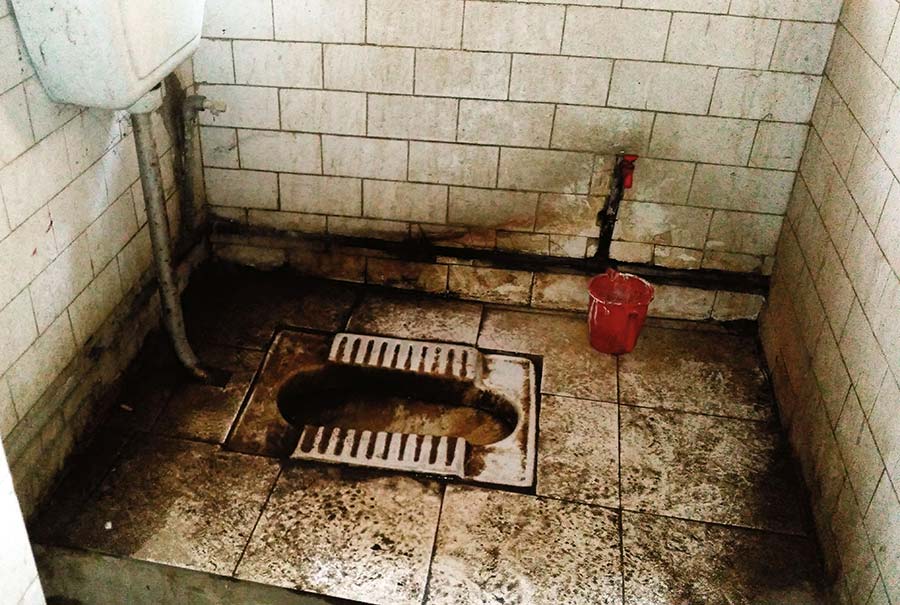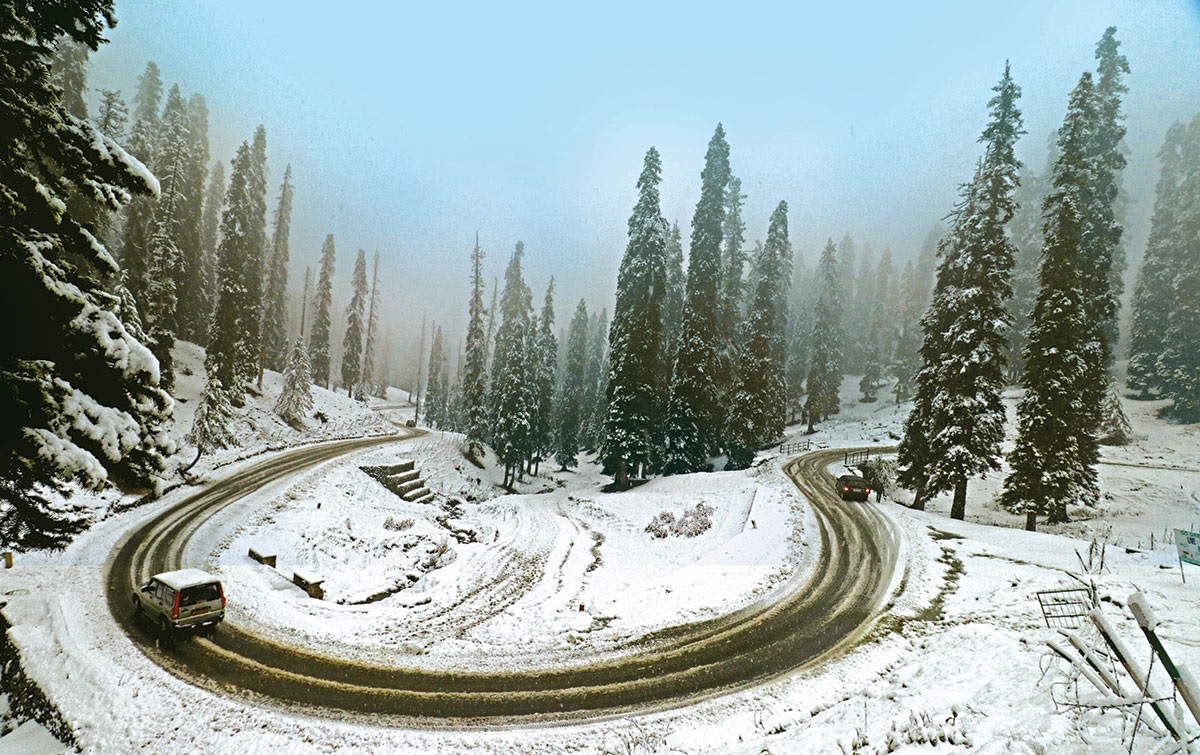Kashmir may have a millennium long recorded history and might be the Paradise on Earth but the fact is that it is one of India’s dirtiest places, which lacks even accessible toilets, reports Shams Irfan

Mr and Mrs Shikhar – both in pharmaceutical sector, flew straight to Kashmir for their honeymoon after they got married a week back in Mumbai. After spending two nights in Pahalgam,– they took an early morning cab for Gulmarg, some 140 kms away in north. As their cab crisscrossed through small villages and highway towns, Shikhar’s wife asked the driver to stop at a nearby public convenience.
It took Abdul, the driver, a while to recall where exactly he had seen one.
Then after five minutes pause, Abdul told them that the nearest one is in Srinagar, still 50 minutes drive away, if traffic is smooth.
Once they reached Lethpora, a highway village, some 20 kms short of Srinagar, Shikhar’s wife asked the driver if it is okay to enter a house randomly and use their washroom.
Feeling embarrassed as a host, Abdul stopped outside a modest looking house and without a word went inside.
Two minutes later he came out followed by an elderly lady, who welcomed Shikhar and his wife in.
“They were gracious people, offered us tea and biscuits afterwards,” recalls Shikhar. “But it is sad there aren’t any public toilets in a tourist place like Kashmir?
With just 1271 public toilets between Pathankot and Ladakh, Kashmir’s two main cities, Srinagar and Jammu are ranked at 241 and 251 spot of Indian clean cities index, respectively.
In tourist hub Srinagar, there are only 75 public toilets, out of which only 68 are functional. And out of them only 11 are reserved for females.
“Most of these public toilets are not functional and those functional are too unhygienic to be used,” said Shazia, a student who makes an up-down journey daily from Pulwama town to attend her college in Srinagar.
Interestingly, most of the functional public toilets close their doors after 5 pm, forcing a large chunk of tourists and local population to find alternative spaces to answer nature’s call. “There is no place to go if one needs to use a toilet after dusk,” said Shazia. “The situation is even worse in rural areas. There are none at all.”
The situation in schools and colleges is even worse, mostly in those run by the government and located outside Srinagar. “Most of the schools don’t have proper toilet facilities,” said a teacher of a primary school in Pahalgam. “And the ones that have toilets don’t have separate ones for boys and girls.”
According to Unified District Information System for Education Survey 2014-15, in Jammu and Kashmir 6,351 schools lack toilets for girls and 8,098 lack toilets for boys. Interestingly,
more than 71 percent of schools have no basins or taps to wash hands near toilets and urinals.
As Aabid and his family walked out of the Srinagar airport’s departure terminal after an hour-long flight from Delhi, his 13-year-old daughter said she wants to use a toilet.
As he asked around, Aabid was shocked to learn that the only functional public toilet located inside the paid-parking lot is now defunct. “It was in such a shape that I didn’t dare to go near it because of the stench,” recalls Aabid.
From airport to Srinagar’s main commercial hub Lal Chowk, there is no public toilet in between. The nearest paid one is located in the heart of Lal Chowk, near the iconic Ghanta Ghar, but that too is small and stinky.
“I have seen tourists running from one spot to other looking for a public toilet,” said Waseem, who sells dry fruits and other Kashmiri handicrafts from his shop in Lethpora.
On a sunny afternoon in October, when the fields near Lethpora were readying for years saffron crop, a tourist bus stopped aside. Within no time, around fifty male passengers got down one-after-another, in a mechanical manner, and took position inside the once revered saffron fields. Then, without bothering about their surroundings they relieved themselves, much to the disgust of onlookers and shopkeepers who watched in dismay.
“Why can’t local municipality construct a public toilet nearby so that the sanctity of our saffron fields is kept intact,” said Waseem, who is witness to such scenes almost on a daily basis. “I don’t blame tourist. They have nowhere to go.” The joke in Pampore is that the Saffron karewas are high in uric acid!
Given the importance of public toilets in a tourist places like Kashmir, whenever a new one is constructed, everyone tries to take the credit. On July 26, 2017, Assembly Speaker, Kavinder Gupta took time off from his otherwise busy schedule to inaugurate a public toilet complex at JDA Park near Railway Station Jammu.
In 2013, State’s Tourism Department had identified fifty villages in Kashmir which were to be developed as tourism villages. Three rural tourism circuits were also identified and sanctioned by the Centre for development. But given the lack of basic amenities like good roads, uninterrupted electricity, basic hygiene and public toilets, the plan got shelved.
According to the data available on Swachh Bharat Mission website, only 40.97 of households in Kashmir have toilets, which is second worst in India after Bihar (32.41). Only 412 villages out of 6694 are open-defecation free in J&K, which calculates to just 6.15 percent of the total villages.
“More than money, one needs to have sense to develop world class infrastructure in cities and villages, so that both locals and tourists can use them,” said Shazia.















